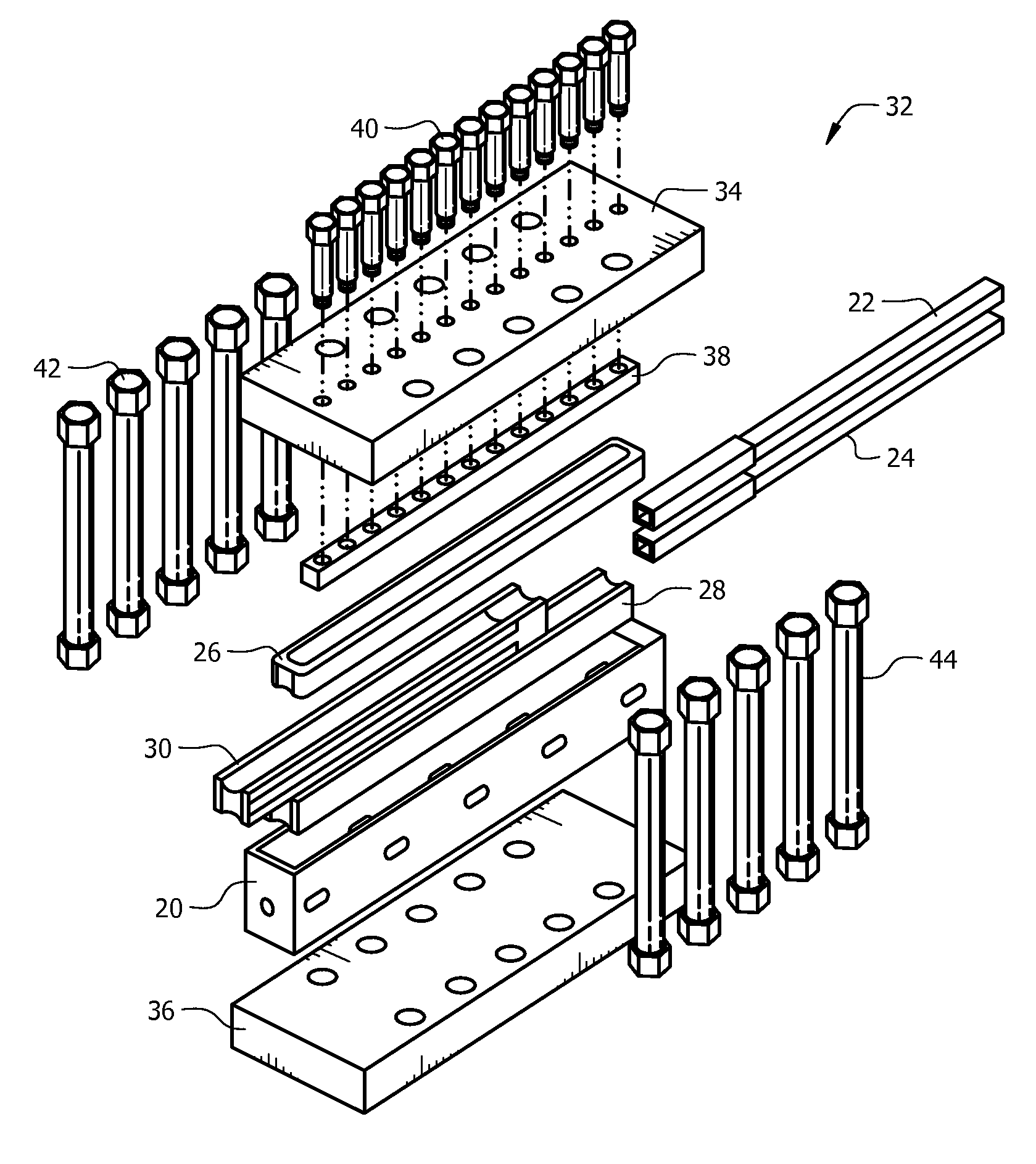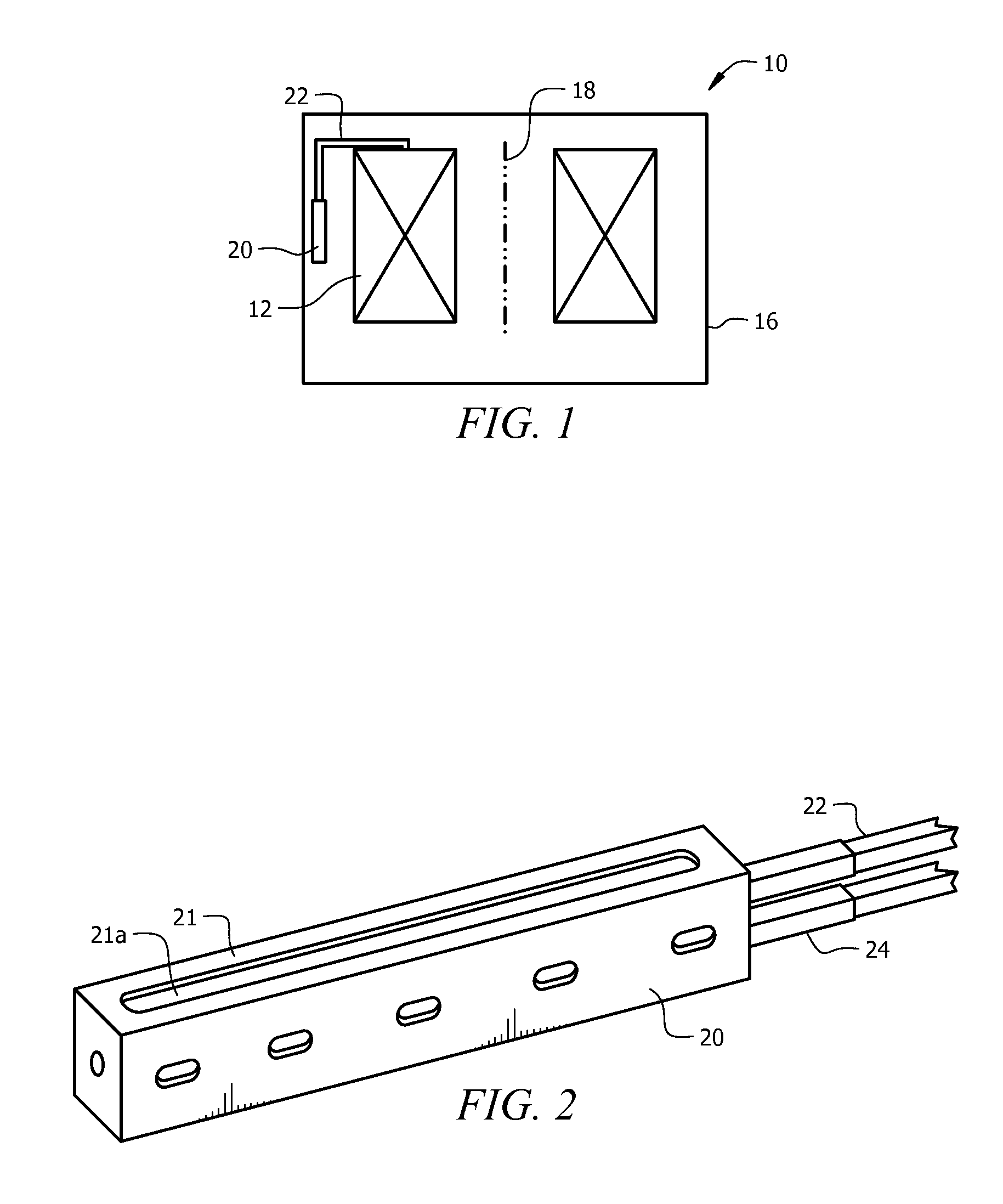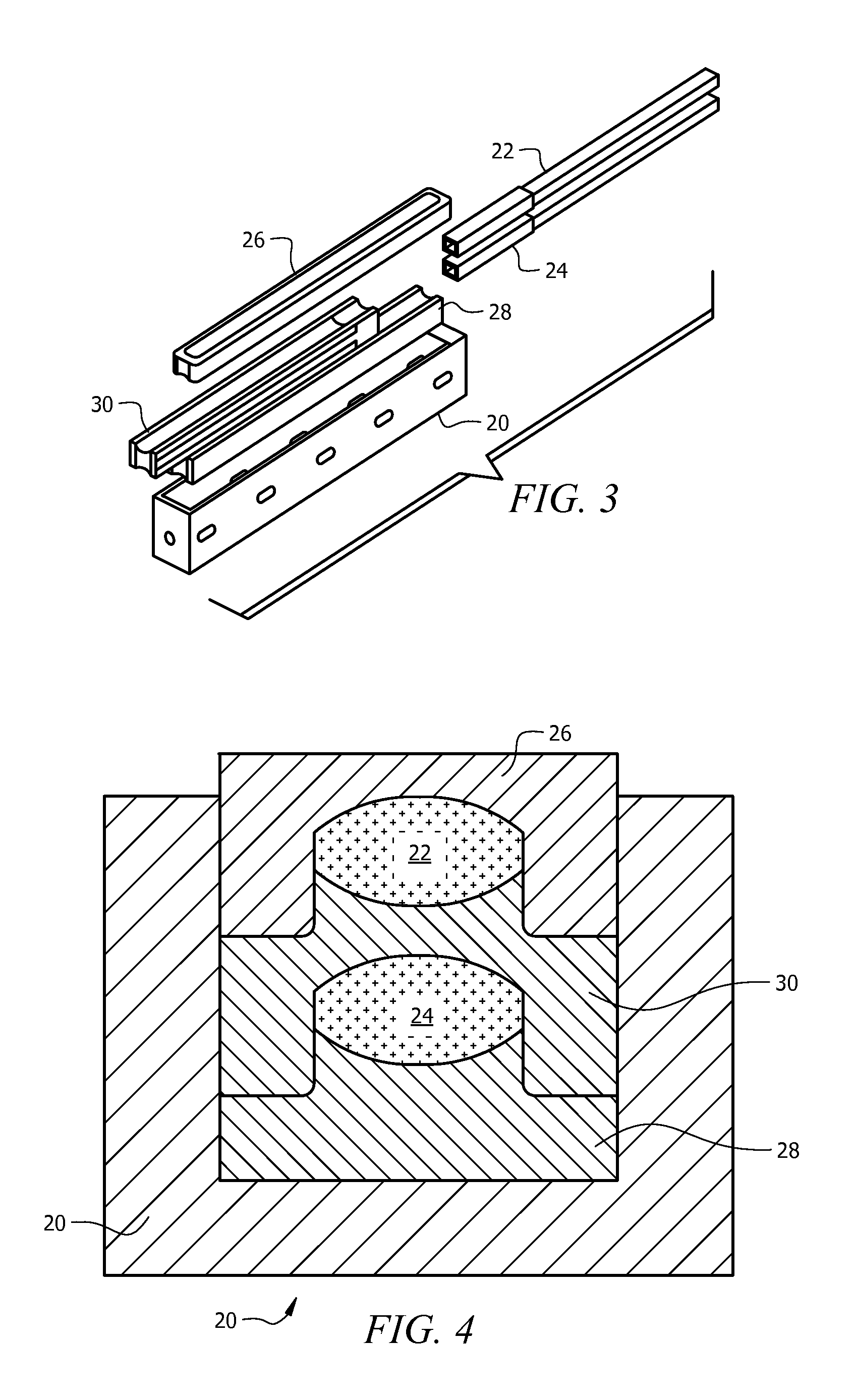Solderless cable-in-conduit-conductor (CICC) joint
a technology of conductors and cables, applied in the field of hybrid magnetics, can solve the problems of high dc resistance and failure under extremely low temperatures and high stresses, and achieve the effect of low dc resistan
- Summary
- Abstract
- Description
- Claims
- Application Information
AI Technical Summary
Benefits of technology
Problems solved by technology
Method used
Image
Examples
Embodiment Construction
[0035]The novel structure includes a solderless joint for the 35-T SCH. The joint is tested using 45-T coil-A cable. The configuration provides a long term worry free vacuum tightness and voids the bond between thermal mismatch materials like copper and stainless steel, which may lead to joint deformation during heat treatment. A quantitative comparison of the current transient with the novel solder filled praying-hands joint is also disclosed.
[0036]The novel design of the CICC joint is efficient, robust and well balanced between DC resistance and AC losses.
[0037]Referring now to FIG. 1, it will there be seen that the environment of the invention as a whole is denoted by the reference numeral 10.
[0038]Superconducting outsert 12 includes three concentric layer-wound subcoils using different grades of Nb3Sn cable-in-conduit-conductors. Outsert 12 is a right circular cylinder similar to a bundt cake with sharp corners and perfectly round inner and outer sides. FIG. 1 is a cross-section...
PUM
 Login to View More
Login to View More Abstract
Description
Claims
Application Information
 Login to View More
Login to View More - R&D
- Intellectual Property
- Life Sciences
- Materials
- Tech Scout
- Unparalleled Data Quality
- Higher Quality Content
- 60% Fewer Hallucinations
Browse by: Latest US Patents, China's latest patents, Technical Efficacy Thesaurus, Application Domain, Technology Topic, Popular Technical Reports.
© 2025 PatSnap. All rights reserved.Legal|Privacy policy|Modern Slavery Act Transparency Statement|Sitemap|About US| Contact US: help@patsnap.com



